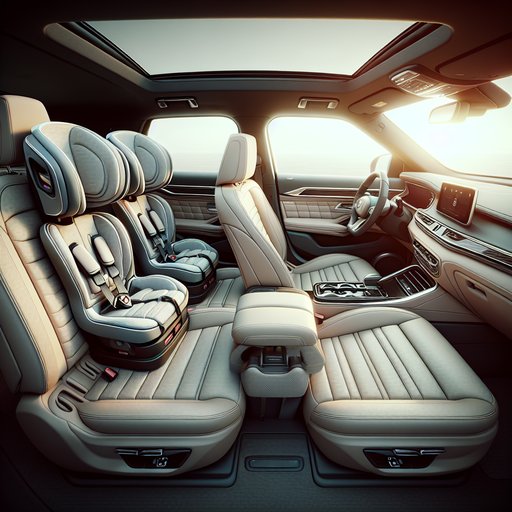
We put a 2024 Nissan Rogue Platinum AWD through a real-world family install: two LATCH-mounted child seats and a center booster. Alongside anchor access and belt routing, we evaluated rear-door opening angles, cabin space, and day-to-day usability.
Our test car is the 2024 Rogue with the 1.5-liter VC-Turbo three-cylinder (201 hp, 225 lb-ft) and Xtronic CVT, riding on 19-inch wheels. Nissan’s compact SUV is known for its near-90-degree rear-door openings and wide bench—useful claims we set out to verify with actual seats and kids. Cargo space (mid-30s cu ft behind row two) and a relatively flat floor also help when juggling strollers and backpacks. Testing took place over a week of school runs and a weekend road trip, using two child seats (rear-facing convertible and forward-facing harness, both LATCH-installed outboard) plus a narrow backless booster in the center using the seat belt.
Ambient temps were 60–75°F; we repeated installs multiple times, checked for independent tightness (<1 inch movement at the belt path), and verified head-restraint positions and top-tether routing. Lower anchor access is excellent: both outboard positions have shallow, clearly marked anchor points with plastic guides, so you don’t have to dig into the seat bight. Clip-on and push-on connectors latched without drama, and the bench foam didn’t collapse excessively under load, which made re-checks easy. Each outboard seatback has a top tether; they’re reachable from the cargo area and sit high enough to keep the tether strap clear of the headrest.
Expect 3–5 minutes per seat for a secure install once you’re familiar. The center booster relies on the lap-shoulder belt. In the Rogue, the center shoulder belt originates from the roofline and buckles into a short, semi-rigid stalk; routing across a backless booster was straightforward, with no belt snagging in typical guides. With both outboard seats installed, buckle access is tight but workable; small hands can reach, though younger kids may need help.
Belt fit on our 6–8-year-old testers was good: the shoulder belt sat mid-clavicle and the lap belt rode low on the hips, not the abdomen. Door geometry is a highlight. The rear doors open to nearly 90 degrees, creating a broad aperture that simplifies loading a rear-facing seat and wrangling a wiggly toddler. Step-in height is family-friendly, and the roofline doesn’t intrude on the swing arc, so you’re less likely to bump seat shells on the way in.
With a rear-facing seat behind a 5'10" driver, the front seat remained at a comfortable position; knee room for the opposite outboard passenger was still acceptable. Three-across in a compact SUV is always a packaging puzzle, but the Rogue makes it feasible with thoughtful anchor placement and generous door openings. Choose a narrower booster to preserve buckle access, ensure both outboard seats use their top tethers, and double-check the roof-mounted center belt is fully engaged in its lower receiver. If you regularly carry three kids across, the Rogue is a solid contender; if you want more elbow room and easier independent buckling, a midsize SUV or a bench with integrated third LATCH set will be even better.












